Bernard Bruty: Ernie’s War.

Ernie’s War.
This week we are delighted to welcome our very first visiting contributor. Long time friend Bernard is writing about his father’s military adventures in ‘Ernie’s War’. Over to you Bernard:
Delving into my family’s past has been a great fascination for me. Capturing these memories is important. A little more on that subject at the end. Ernie’s War is the story is about my father in the early stages of the war. Joining the Air Training Corp, through to the RAF and his continued involvement post war.
Let me tell you about Ernie’s War.
One of Ernie’s earliest memories is of the 777 foot long R101 Airship. This flew over London from Bedford in Oct 1929. Even from a distance he remembers its huge shape. Viewing it from the roof of the Albert Mansions. A large block of flats on the South Lambeth Road in London. Their family home. This left a lasting impression in years to come and to his desire to be a pilot.
1929 flight over London that Ernie would have seen.
R101, Britain’s Million-Pound Monster, Comes to London …

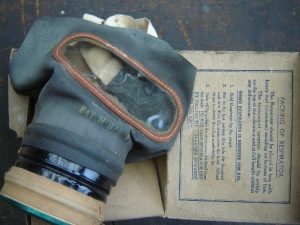
Ernie’s war time gas mask.
As with most families, Ernie heard the news of the outbreak of war on the family radio. A bomb shelter was not far from where they lived. He can remember taking shelter with the family on at least a couple of occasions. It was very crowded and everyone was well packed in.
On 5 February 1941, the Air Training Corps was officially established and prepared young men for entry into the RAF. Ernie joined the previous month, on 12 January. So began his service with 1328 (2nd Lambeth) Squadron.
He was presented with a cadets’ training manual on joining. An earlier introductory page quotes ‘Many of you will have heard the stirring words from Air Marshal Garrod’s address on the gramophone record which has been made available to you to hear; but each of you ought to have a permanent copy reprinted here’.
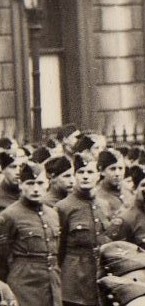
Ernie (middle, front).
During weekdays after work, Ernie attended ATC evening classes learning all aspects of navigation including wireless operation and Morse Code – see selection of manuals below. His aim was to be a pilot.
Saturday afternoon the ATC arranged athletic meetings. In his report he was noted as attending all activities and played in the Rugby XV.
Sunday mornings were allocated to church parades or drill at the ATC centre situated in a large converted house in Stockwell, London.
During his ATC service he was working as a Shorts Record Clerk at the General Film Distributors based in Wardour Street, London. In July 1941 this paid him a salary of £2.00 a week.
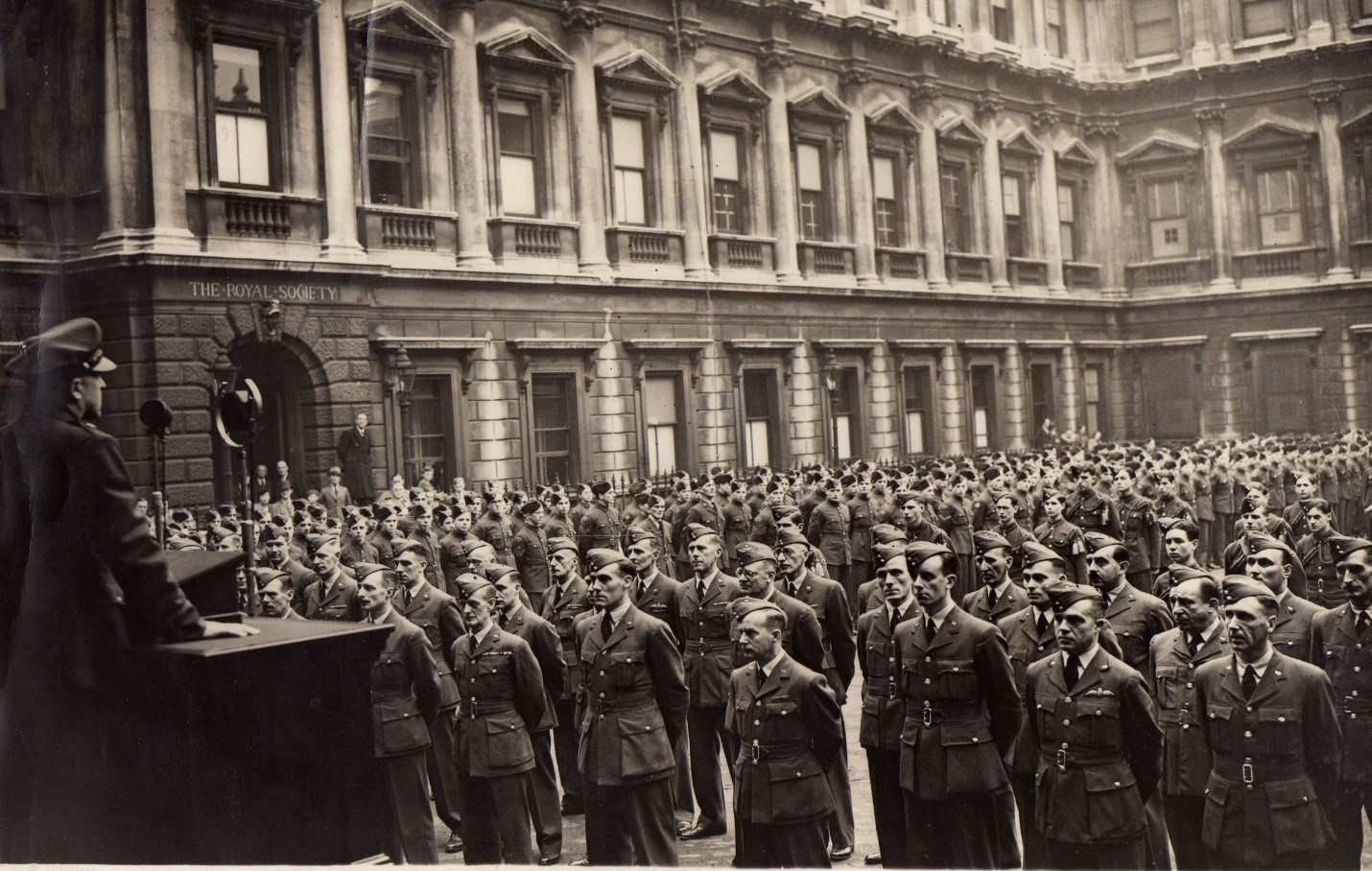
Large ATC event about 1941 at Royal Society Court, Burlington House, Piccadilly, London. Ernie is shown middle of front row in enlarged section above.
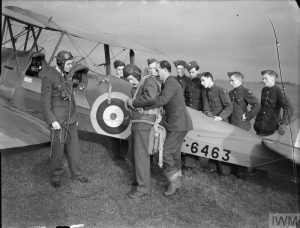
De-Havilland Tiger Moth at Biggin Hill IWM CH5030.
Ernie remembers flying under instruction on two sessions in a De-Havilland Tiger Moth at Biggin Hill. This was arranged as part of air experience flight through his training at the ATC. The photo here does not show Ernie, but taken at Biggin Hill during his service period. He recalls being kitted up with the parachute as shown and ‘doing looping’ in the plane.
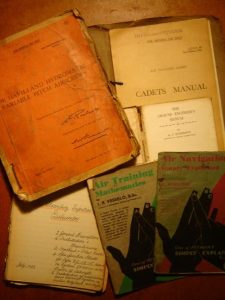
Selection of Ernie’s training manuals.
Having now passed all his exams to be a pilot, he had to report to RAF St Athans, South Wales. A school of technical training centre for a three day assessment which covered all aspects of flying, for which he passed. A very thorough medical followed. This went fine until the eye sight test. Here he failed as they discovered he was colour blind. This, of course, meant he could not be a pilot. By a strange coincidence the next man behind him also turned out to be colour blind as well.
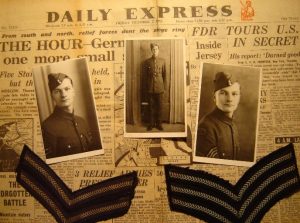 At the ATC he worked his way up to corporal, then sergeant, and would drill cadets on parade.
At the ATC he worked his way up to corporal, then sergeant, and would drill cadets on parade.
Between 12 January 1941 and discharge on 2 November 1942, Ernie attended 250 parades and lectures. Noted as being a ‘Keen and efficient NCO’ with an excellent record of attendance by the CO.
Prior to leaving the ATC he received RAF recruiting literature. He attended a local recruiting centre approximately six months before he was eligible for call-up. Here he was required to state his preference for the service he wanted and discuss possible roles with the RAF. To fully enlist in the RAF you would have to have left the ATC.
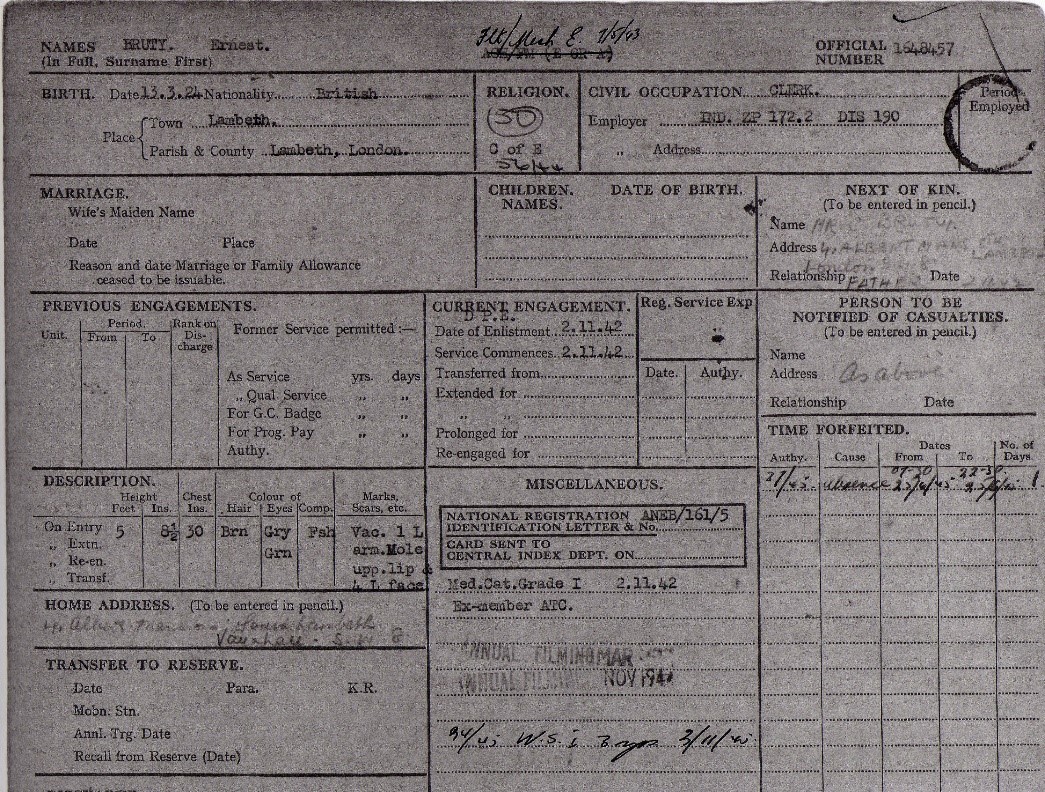
RAF Form 543 – Personal Administrators Airman’s Record. Note circled ‘50’, his release group no.
Once Ernie had given leave of his job at General Film Distributors in Wardour Street, he was on his way to No 2 Recruits Centre at RAF Cardington, Bedfordshire. Arriving at the camp on 2 November 1942 with other trainees they were met by a sergeant, placed in rows, marched and then allocated by a corporal to their accommodation hut from a roll call. Finally handed chits and queued to collect their RAF clothing – uniform, shirts, shoes etc from a long desk in a hut giving required size to the staff. A corporal was in charge of each accommodation hut and everything had to be clean, smart and tidy. Kit was inspected by an Orderly Officer. Plenty of drilling took place with basic training.
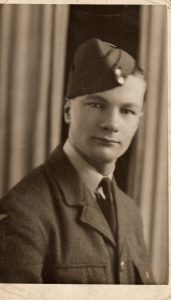 On the 6 November he was now at No 16 Recruits Centre in Great Yarmouth. Here he was given an induction with plenty of drill. Yarmouth promenade was used for the latter. There was no accommodation at the recruitment centre since this was purely an admin office block. Billeting took place in hotels or boarding establishments. Public buildings would have been hired for inductions and history of the RAF.
On the 6 November he was now at No 16 Recruits Centre in Great Yarmouth. Here he was given an induction with plenty of drill. Yarmouth promenade was used for the latter. There was no accommodation at the recruitment centre since this was purely an admin office block. Billeting took place in hotels or boarding establishments. Public buildings would have been hired for inductions and history of the RAF.
Transferring to No 4 School of Technical Training at RAF St Athan, Wales on 31 December, he spent the period learning to qualify in his chosen profession, which was as a Flight Mechanical Engineer. The exam was tough and standards very high. Most people passed out from this exam as an Aircraftsman 2nd Class (AC.2). If you were a genius you become Leading Aircraftsman (LAC). Ernie completed the exams on 7 May 1943 with a score of 48.4% achieving AC2 the lowest rank. He was then posted on 29 May 1943.
59 Operational Training Unit (OTU) at RAF Milfield, Northumberland was responsible for training fighter pilots. Ernie’s role was on the maintenance side. Working firstly under the guidance of a sergeant whilst getting to know the job. Firstly on the Hawker Hurricane then Typhoons or Tiffy’s as Ernie called them. He was always talking to the trainee pilots about his experience in the ATC.
Over its 3 and a half years as an OTU here, 51 pilots were killed or died from injuries as a result of flying accidents.
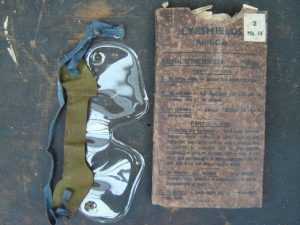
Ernie’s Eyeshield Anti Gas protectors.
Ernie was issued with Eyeshield Anti Gas protectors, supplied to Military personnel as a preventative measure in event of chemical warfare. It was one of those items never used.
59 OTU was disbanded in January 1944, and Ernie moved onto 53 OTU on 4 February, which, like 59 OTU, was also responsible for training fighter pilots.
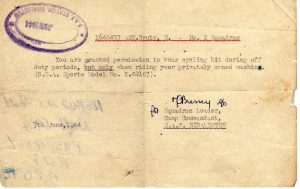
Special cycle permit.
Although based at RAF Kirton-In-Lindsay, North Lincolnshire, he also worked at RAF Hibaldstow which was a few miles away, which had become a satellite of Kirton.
He was given a special permit for permission to wear cycling kit during off duty periods. Having his own bicycle was a treat to get around the base and locally.
As an Aircraftsman, he was assigned by the sergeant to an allocated job on the Supermarine Spitfire. This being maintenance engineering duties, including adjusting valves and instruments. Ernie might find himself working alongside another Aircraftsman who was solely concerned with the frame fabric of the airplane. A NAAFI wagon would visit each dispersal point to dispense refreshments.
Whoever was working on the aircraft needed to sign off their job in the flight hut. The NCO would sign this off at the end of the day. Ernie, on occasions, would taxi the aircraft to its bay.
Ernie was transferred to No 650 Servicing Echelon on 20 September. This unit was formed of additional technical staff and engineers who supported No 570 Squadron. This was a bomber unit active with No 38 group. An airborne bomber support and special operations squadron, which was based in turn at Hurn, Harwell then Rivenhall. His service started in Harwell, Essex but was short. By now he was an Aircraftsman 1st Class (AC1).
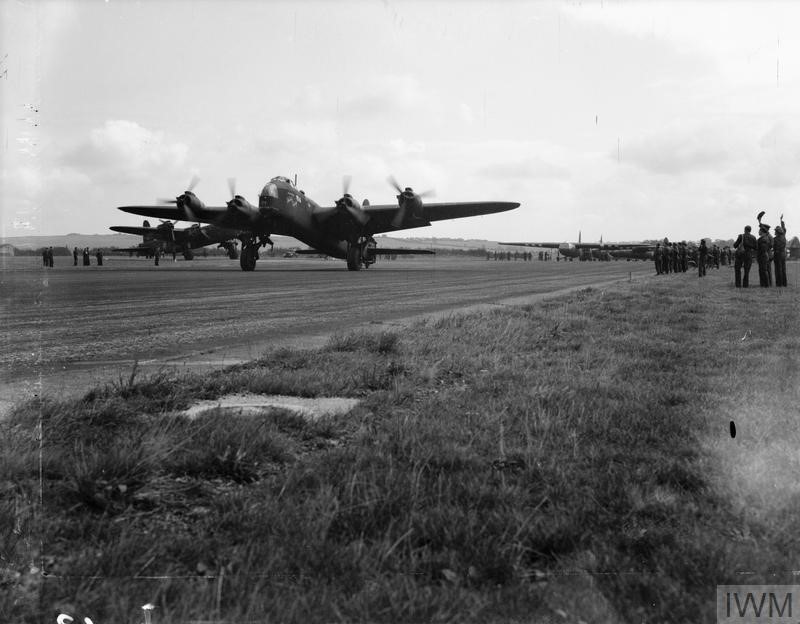
RAF Harwell IWM CH13875.
Ernie used his own bicycle, but a permit was still required with restrictions.
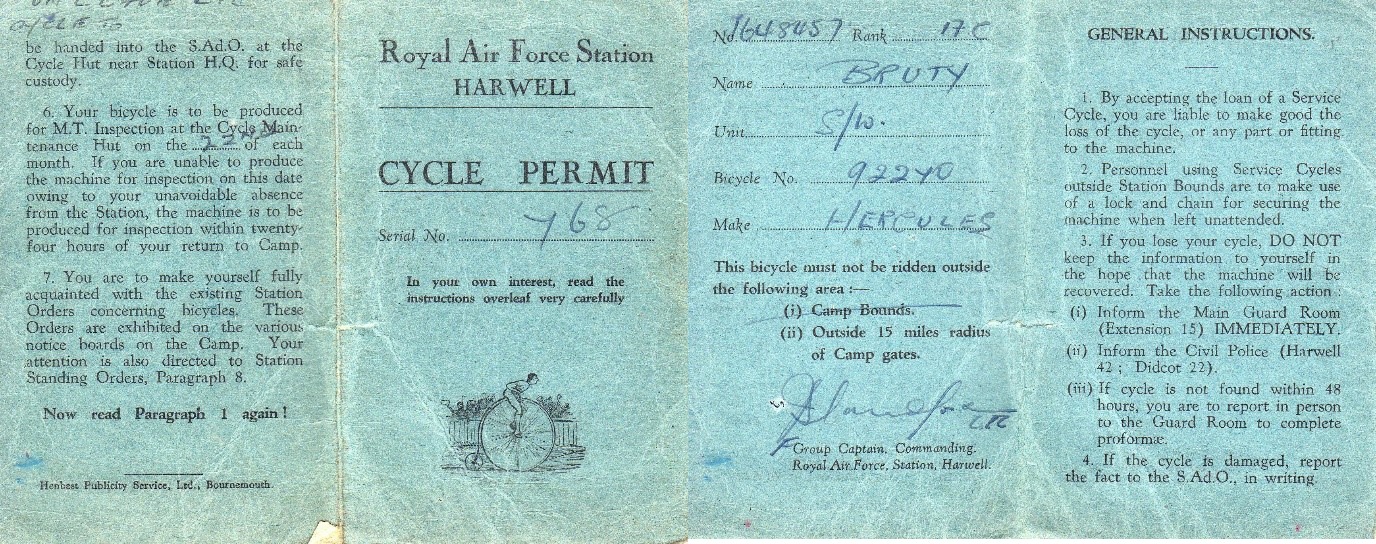
Ernie’s new cycle permit.
Ernie arrived at Harwell at the time of the squadron actioned at Arnhem. His duties were with ground crew servicing the aircraft which for him now included the Short Stirling after Arnhem. The journal below gives an idea of the situation on the base around that time.
‘Allied armies were sweeping across Europe, ahead was a barrier the River Rhine. Airborne attacks in support of the breaching were planned on 17th September 1944 with Harwell’s squadrons being involved with Arnhem, and just after 11am Nos 295 and 570 squadrons with their gliders in tow took off to join the cavalcade, met at the Dutch coast by Spitfires and Typhoons. Dakotas filled with paratroops came from behind and under the glider trains to arrive first at the dropping zones, followed in by Harwell’s squadrons to release their gliders. By mid-afternoon, Harwell’s Stirlings had returned and ground crews serviced the aircraft and made gliders ready. Morning mist delayed the take-off of 13 Stirlings towing gliders and another 32 with supplies for the troops on the ground. Resupply of the Arnhem force became a vital daily task not helped by delayed take-off, and the 88mm guns of the enemy had textbook targets as the Stirlings came in at about 500 feet at slow speed to drop supplies. Delays in take-off did not help the provision of fighter cover, but Harwell’s squadrons did not suffer to the same extent as others, when on 20th September the fighter cover failed to materialise. Fighter wrecks on and around the battlefield were mute evidence of their attempts to protect the aircraft bringing supplies and support to the ground forces. Arnhem was not a success and the last supply drops were carried out on 23rd September. Anti-aircraft fire had brought down four of Harwell’s Stirlings and two more had force landed. Barely had Harwell begun to repair the damage when they were ordered to Rivenhall in Essex on 7th October 1944.’
Both 290 and 570 Squadron’s had now moved from Harwell. This all occurred over two days.
1 and 7 October. The Americans who had previously occupied the base had left. Ernie arrived at Rivenhall on 7 October 1944 in the aircraft ground crew serviced. During his time in Rivenhall he was promoted to Leading Aircraftsman. Personnel on the base numbered: 251 Officers, 603 NCO’s and 1838 other ranks.
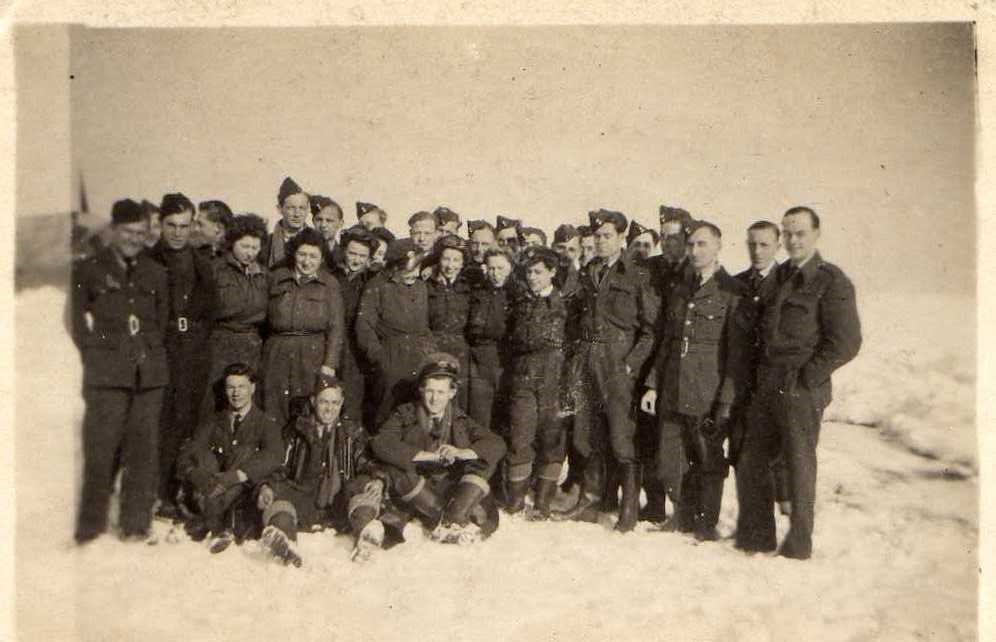
Rivenhall exact date unknown. Ernie first left sitting.
Rivenhall’s nearest village was Silver End (1.1 km away). His friend ‘Paddy’ joined him from Harwell, also ground crew who ended up marrying a girl from the village of Silver End. It was at their local pub in Silver End both were celebrating, Ernie his birthday and Paddy St Patrick’s Day. Having left the pub in a merry state, Paddy was worse for drink and fell in a ditch on the way back to the base. Ernie had to drag him out and help him back both worse the next day for duty. Ernie believes he and Paddy got posted together because their surname began with a ‘B’ which he says seemed to be the norm in the RAF at that time of using letter surnames as posting. Some were posted abroad.
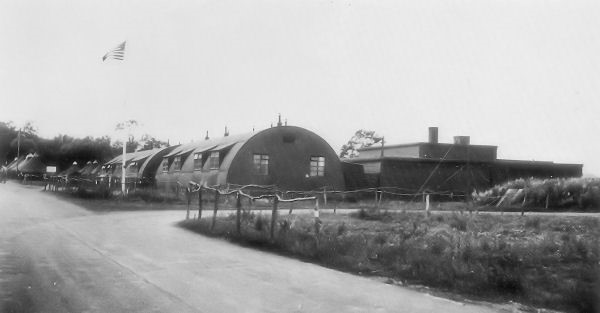
IWM FRE9648 Nissan huts at RAF Rivenhall.
The base had its own tailors, barber, shoemakers plus produce and ration store. Ernie can recall the nissan huts being regularly infested with mice, something they had to get used to. The operation’s block was a windowless reinforced concrete building with a self contained power generator and clean air ventilation system. This block was blast proof, protecting the occupants from indirect bomb blast. Not that this affected Ernie during his service. The nearest he got was on occasions seeing V2 rockets going over the base for London but seen as vapour trails.
Ernie was well versed with Stirlings. He can remember entering through the door by the Stirling’s tailplane and being presented with a huge empty space. Looking up to the rear gunner’s turret. Going forward was a slight climb then there was the wireless operator’s position. A table with a transmitter and receiver above this. Plus switches for internal communication. To the right of the table was the ‘Perspex’ astrodome ‘observational turret’ that he recalls so well. Read further on. Then the flight deck, this would lead onto the seats for the pilot with its perspex window surround. Ernie remembers servicing the aircraft on cold days. Not a pleasant job with a biting wind cutting across the open airfield.
Keen to get more involved, Ernie was given permission by the CO to fly with the aircrew, who he says were delighted to have him on board. In their view it gave them reassurance that if the mechanic who looked after their aircraft was prepared to go it was in safe hands.
He was part of the Stirling air crew on special mission operations dropping saboteurs and agents into occupied France and Belgium. The crew met the agents for the first time at the door of the aircraft just before take off. Few words were said on the flight. Ernie was given the temporary rank of sergeant, which was the minimum rank possible as a crew member. The reason being if captured he would be held with the rest of the crew otherwise he would have been separated by the Germans.
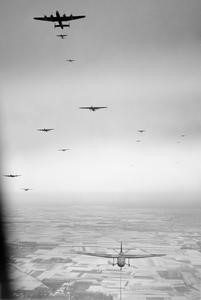
Airborne crossing IWM CL2231.
Ernie’s war involved taking part in the subsequent follow ups from Arnhem in ‘Operation Varsity’, 24 March 1945. This involved the Stirlings carrying airborne divisions in gliders across the Rhine in support of the British crossing. Two days beforehand the airfield was sealed off with barred wire. No one was allowed to leave, post letters or use the telephone. On the 23 March all aircrew were briefed which included Ernie. At 02.00 hrs the following morning the aircrews had a last briefing. From 570 Squadron 30 Stirlings with their gliders took off from Rivenhall carrying 257 troops, 22 jeeps, 23 trailers and 5 motor cycles.
Peter Shuter was the Flight Lieutenant on the Stirling that Ernie was flying on. The aircraft serial number LK156. Squadron Code V8-I. It took off from Rivenhall at 07.37 hrs for the Rhine, crossing at Wesel.
On this operation Ernie’s job was now as a ‘spare crew member’. If any of the crew were injured it was his role to take over since he was fully trained in morse code, navigation, gunnery and pilot if necessary. He wore a parachute throughout. In the observational turret, on top of the aircraft he could see the rest of the formation with the gliders front and behind with the Spitfires rolling over on the outside. He recalls hearing the intense conversation over the aircraft radio from the Spitfires and/or Stirlings on what was going on outside. As soon as his Stirling had dropped their glider the pilot said to the crew ‘lets get out of this place before there is trouble’ he remembers.
A film at the time of the operation 18 min long, in two parts and worth watching.


Part 2 is relevant on this memory.
This film gives a very good insight into the operation and a ‘feel’ confirmed by Ernie.
Ernie’s stirling returned at Rivenhall at 12.47 hrs. 3 of their Stirlings suffered flak damage.
He remembers the debriefing on return, with CO giving them details of the objectives achieved.
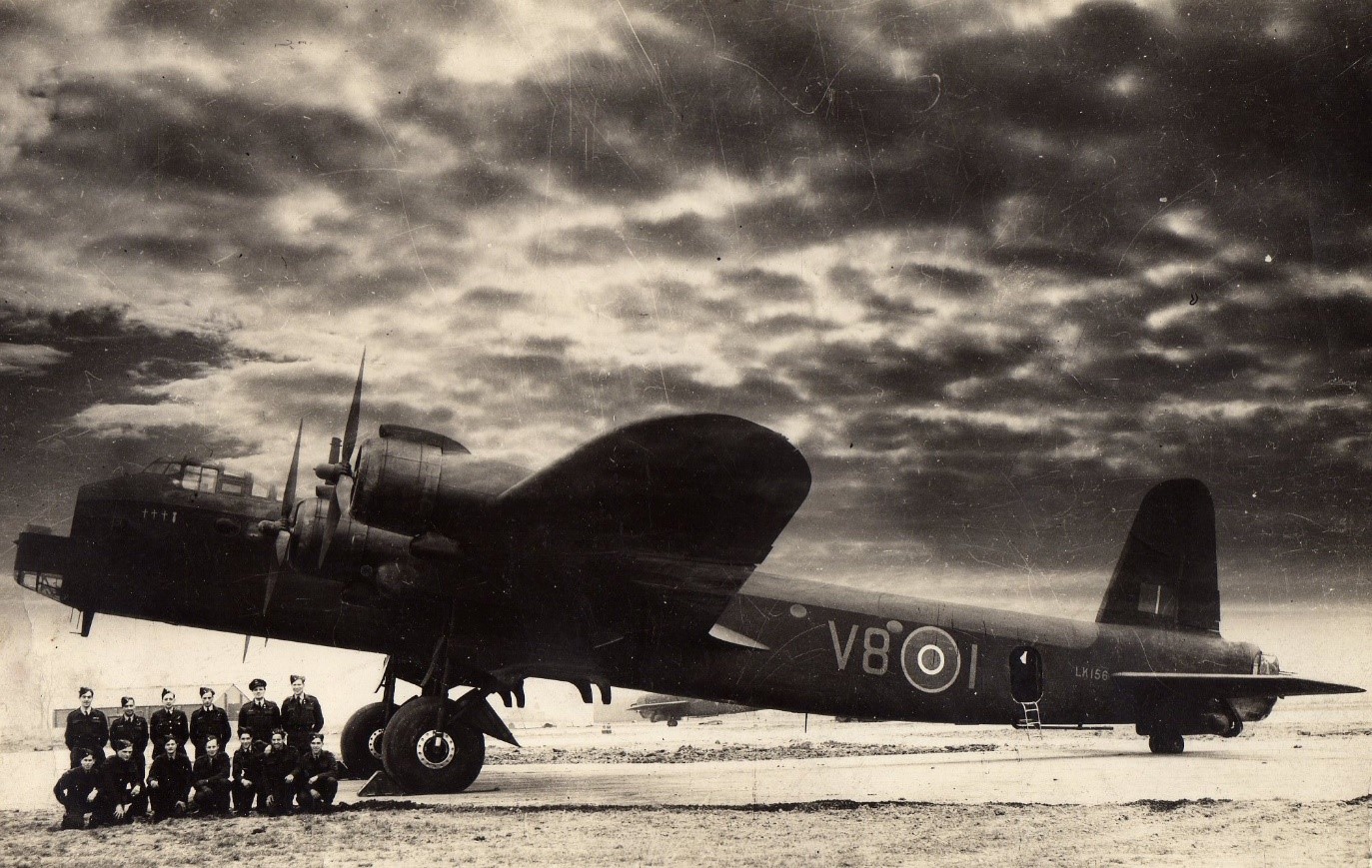
V8 Bomber.
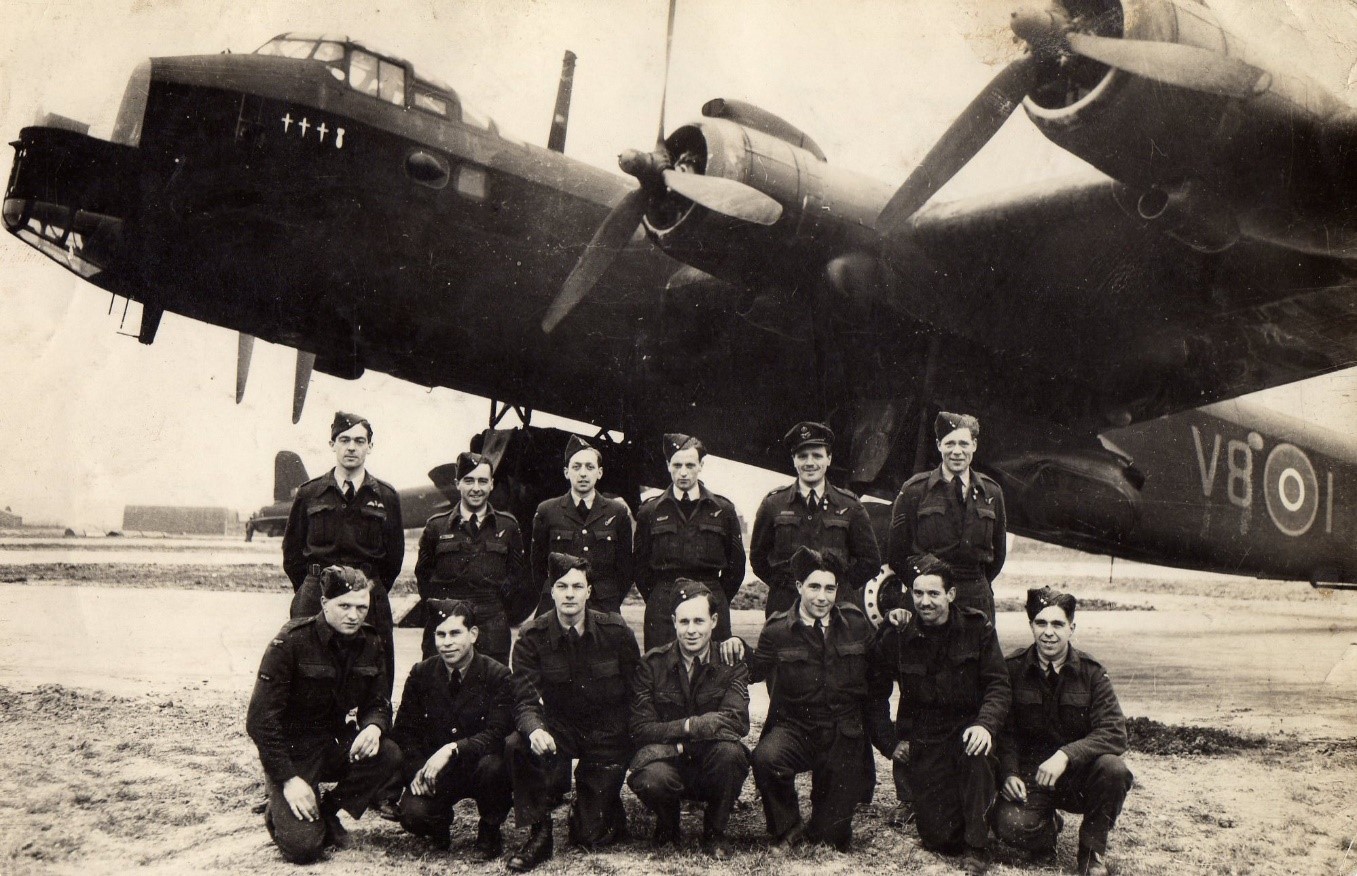
Air and ground crew. Ernie is shown, third from left bottom row with his friend Paddy first left on that row. Peter Shuter the Flight Lieutenant fifth from left top row.
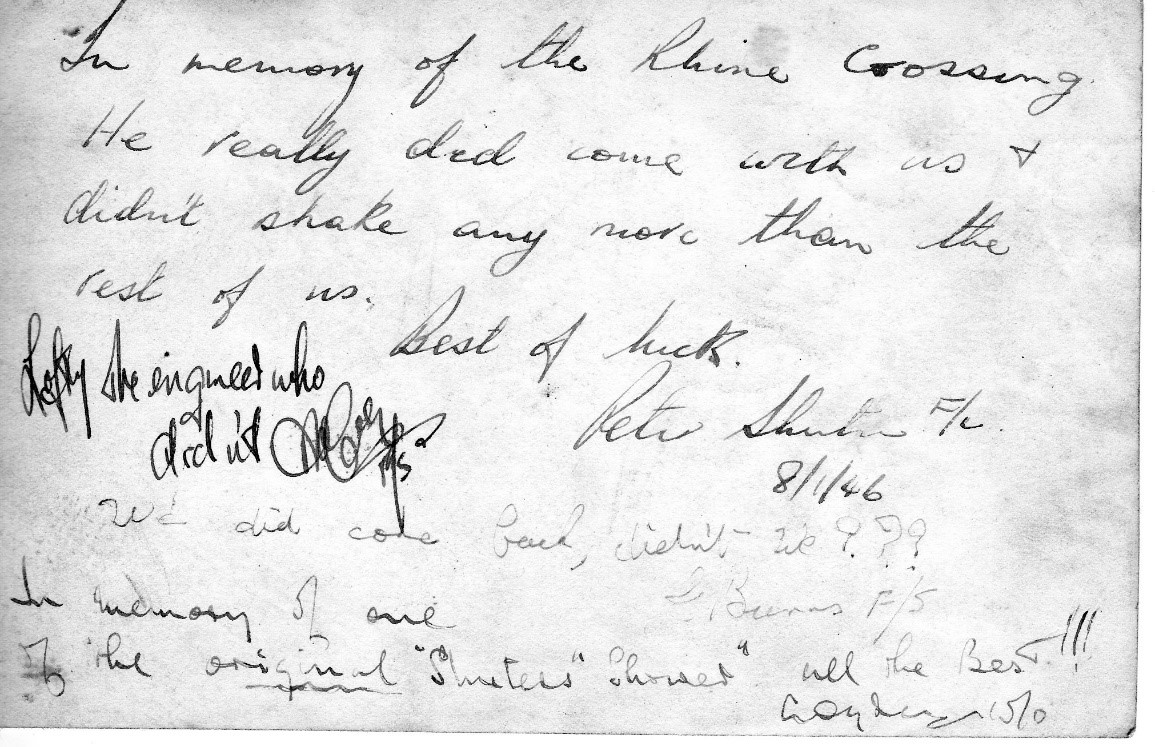
Fellow air crew colleague’s note to Ernie. Written post Operation Varisty January 1946 when Rivenhall disbanded. Sergeant Matthews mentioned here known as ‘Lofty’. A flight engineer from 38 group.
Ernie was involved in two more sorties after Operation Varsity which was now towards the end of the war. This involved picking up prisoners of war (POW’s). The latter to be taken to a centre in Brussels to be deloused. On one such trip they landed at a German aerodrome to pick up 30 POW’s. The stench was very noticeable. Ernie had the chance to talk to some of the POW’s, who told him they had been left behind when the Germans retreated. Rather than move on they stayed behind until help arrived. The crew flew them to be deloused in Brussels. On arrival at Brussels they were met by Customs who turned a blind eye to the watches the POW’s had bought with them even a motorbike. The POW view in talking to Ernie was that ‘the Germans had taken our possessions, so we are taking theirs’. POW’s were met by a NAAFI wagon with food and drink which included some for Ernie and the crew. The aircrew would stay a few days then pick up 30 that had been there a week and fly them home. From the German aerodrome Ernie bought back a pair of wooden shoes, a basin and two plates.
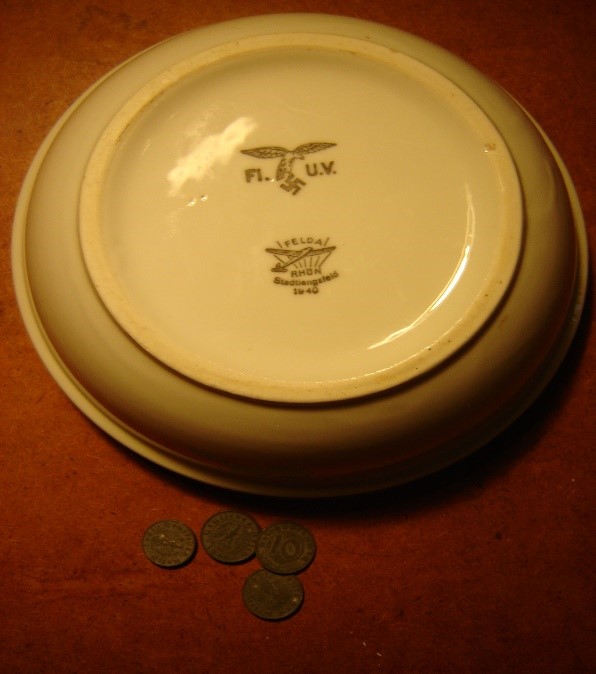
Luftwaffe mess bowl that Ernie acquired.
On one earlier sortie into Germany from Rivenhall once the Stirling had landed, Ernie together with the navigator decided to head into the nearby village. All the Germans had fled from the aerodrome and abandoned the area. The pilot told them that he would be revving the engines up to warn them to get back. Having had a good look around the village they had by now collected souvenirs. Mainly kitchenware stored in a wicker basket. They found themselves in conversation with two men dressed in civilian clothes. The navigator spoke in broken German to them only to find that instead of locals they were British security, who said ‘that’s ok mate’ when they noticed the loot. Ernie and the navigator had to run quickly off with their basket of loot back to the aircraft which was now revving up on the runway ready to take off. In the process of running they lost a lot of the basket out of the basket but got back to the Stirling Ok.
Ernie remembers on VE day ALL station personnel paraded in No 1 Hanger with the Station CO addressing them, roll call of casualties and the Prime Minister’s announcement that war had ceased in Europe.
For a short while he was transferred to No 4053 SE on 26 January 1946 which supported 53 Squadron operating Liberators. Part of transport command out of RAF Gransden Lodge, Cambridgeshire. This base was 10 miles from Cambridge. No 53 was disbanded shortly after he joined when No 102 Squadron took over and was renamed as No 53 so Ernie’s unit found themselves relocated at RAF Upwood not far away until transferred again.
On 15 March he was now at RAF Lyneham with unit No 4511 which supported 511 Squadron operating Avro Yorks, part of transport command. No 511 becoming the first squadron to be fully equipped with these in 1945. Eventually a total of 10 squadrons of the RAF were equipped with the York which was based on the Lancaster. A total of 208 were manufactured for the RAF due to demands at this time. Ernie was involved at the base working on the maintenance side.
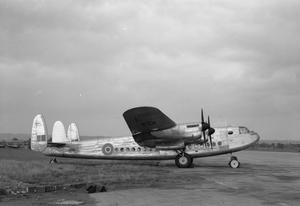
Avro York C Mark 1 No 511 Squadron at RAF Lyneham IWM (CH16488).
During his time at RAF Lyneham, Ernie completed in September 1946 the RAF Educational & Vocational Training Scheme (EVT). This scheme was set up to help men and women in their transition from service to civilian life.
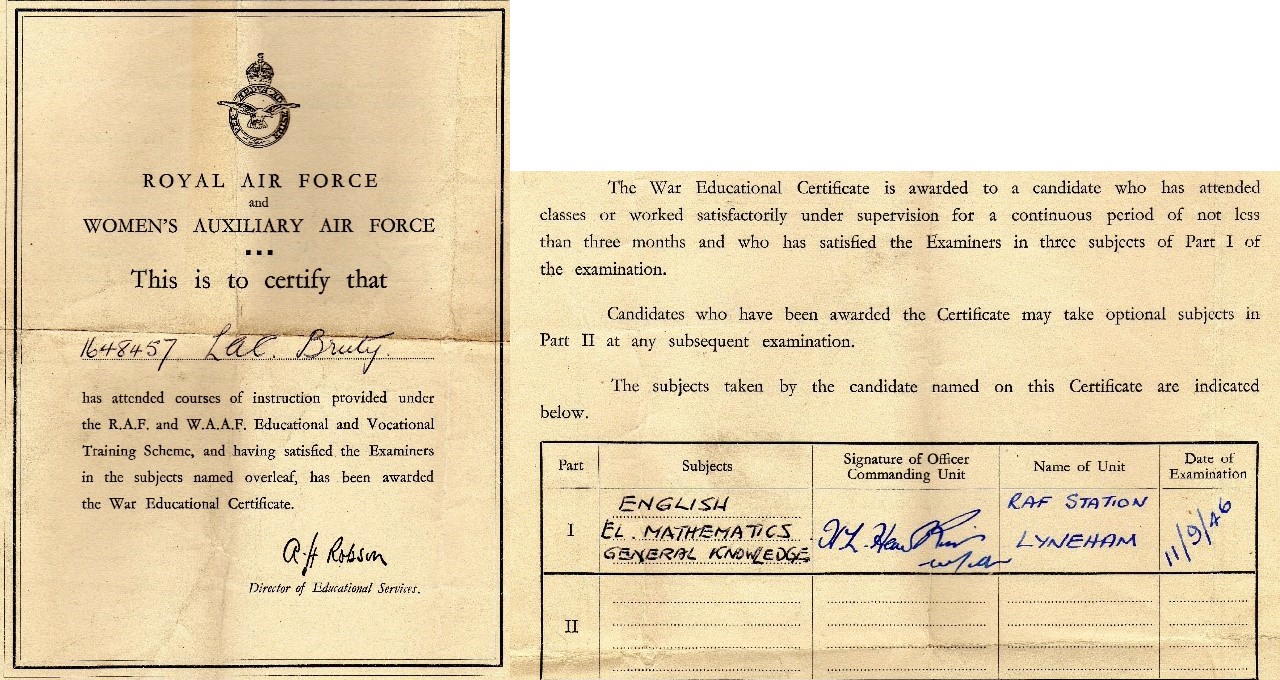
Ernie’s War Education Certificate.
Ernie’s final transfer was to No 4242 support unit on 8 October assigned to 242 Squadron, operating Avro Yorks at RAF Oakington, Cambridgeshire. He worked in the ‘Progress Section’ at the signals office alongside a chief engineer.
His role involved manning the office, communicating with incoming aircraft to the base, noting any service reports including working out maintenance schedules. He would call a runner who would then report to the duty sergeant. He in turn would ensure the aircraftsman who was responsible for the work was in place ready to commence this. The runner would direct the aircraft to the hanger. Progress chasers reported from the hangers to Ernie and this would be updated on the wall charts. Ernie had the job to plot progress on every aircraft on the airdrome and record maintenance.
Reported using RAF Form 96 (A) and sent to HQ Transport command by teleprinter every day.
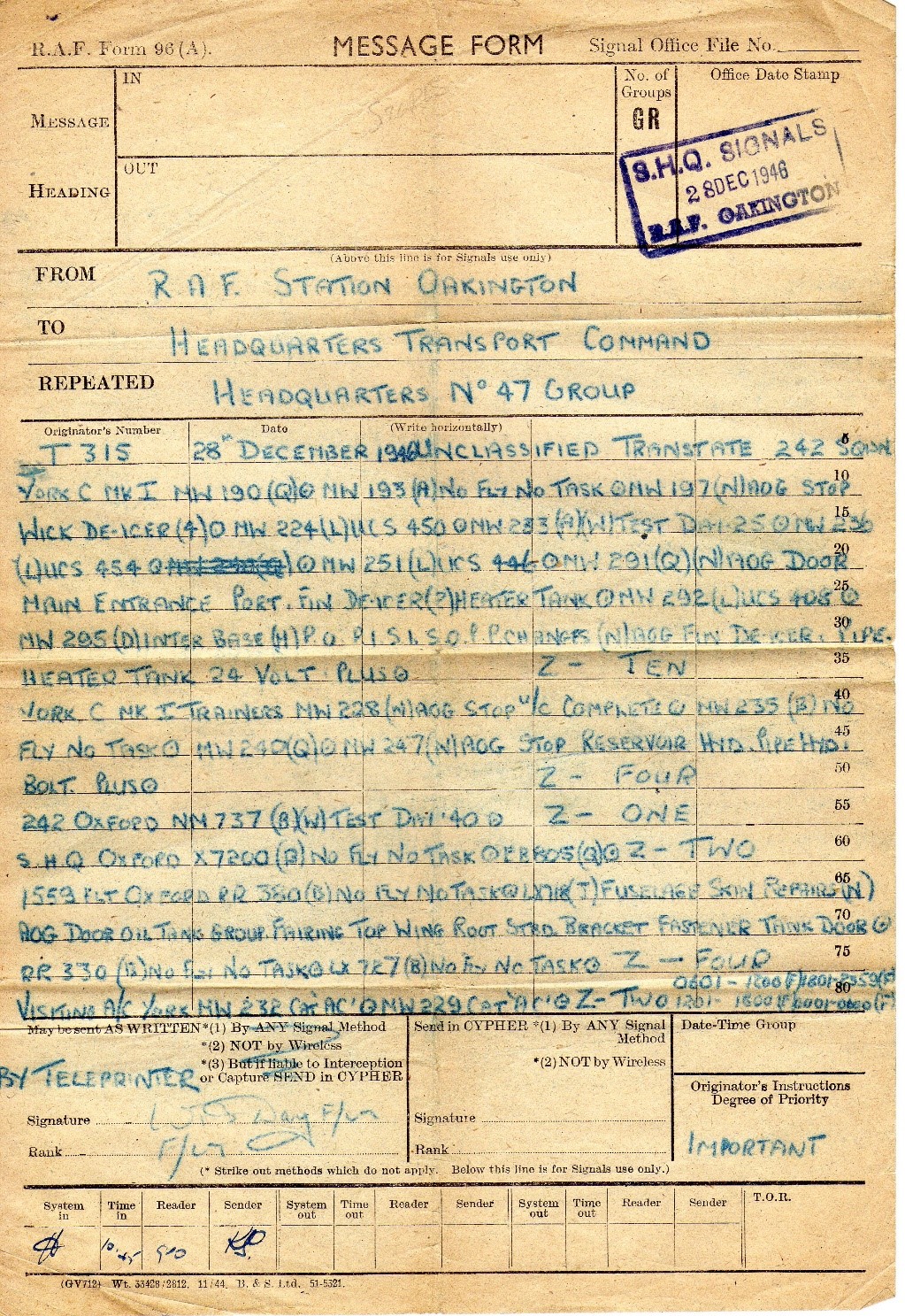
Ernie’s war: Report – RAF form 96a that Ernie kept.
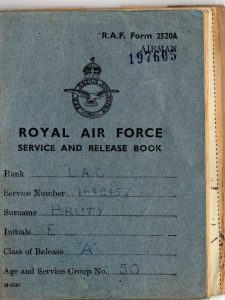 Ernie’s ‘Age & Service Group No’ on his RAF Form 2520a ‘Service & Release book’ was 50 the number gave an indication of your intended release from service. Those that had plenty of age wartime service years had a lower number with aircrew coming up quicker than ground duty personnel. So de-mob was in the form of an orderly exit.
Ernie’s ‘Age & Service Group No’ on his RAF Form 2520a ‘Service & Release book’ was 50 the number gave an indication of your intended release from service. Those that had plenty of age wartime service years had a lower number with aircrew coming up quicker than ground duty personnel. So de-mob was in the form of an orderly exit.
The book contained the necessary conditions of release, authorisation and certificates. The book even contained a travel warrant plus a postal order for the owner to be paid 5 shillings should they be called back in the event of remobilisation. A set of instructions came with this.
Ernie’s CO signed off his service certificate, giving a character and performance report with note suggesting ‘career in any form of employment involving statistics and general office work’.
Once notice had been given of his release formal processes where completed at the RAF Oakington. He left on 13 January 1947 and headed for 101 Personnel Dispersal Centre at RAF Warton. The rule was you had to arrive in your RAF Uniform. An interview followed with an RAF Officer following a set procedure. Ernie remembers the Officer offering him a position to work at Vickers due to the experience he had acquired on engines. He had to return his RAF Uniform and in exchange was given a demob suite, two shirts, shoes, socks, tie, hat and coat. As part of his release Ernie was granted 56 days leave pay. So his actually release date was 11 March. He then collected his leave pay and tax certificate. The whole process completed in one day.
A ‘Pathe’ film looking at de-mob worth looking at:
www.britishpathe.com/video/demob
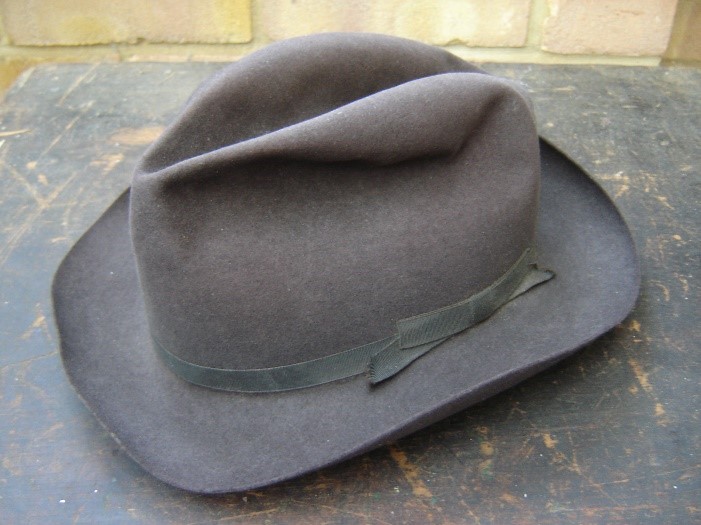
Ernie’s de-mob felt trim hat.
Ernie declined the Vickers job. Instead, returned in March to his old job at General Film Distributors as a booking clerk to earn £4 10 Shillings a week.
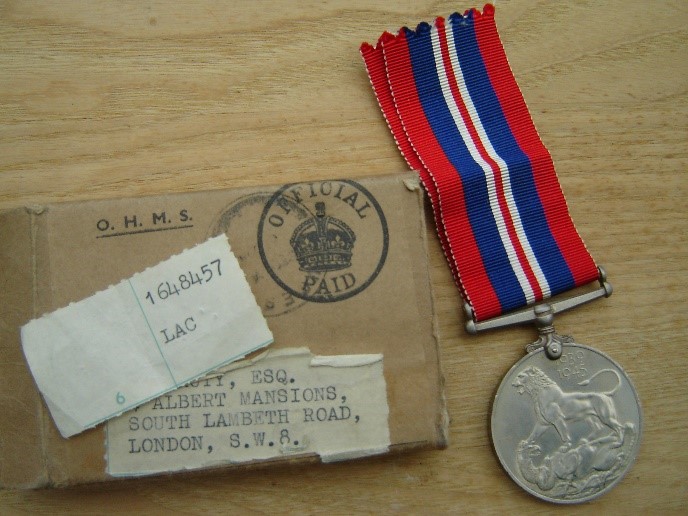
Medal for services followed.
The connection with associated memories of the war continued following de-mob with the ATC unit that Ernie was attached back in 1941 forming a social club called the ‘Wingers’. It consisted of those that survived the war. Its club secretary was his old CO, with Ernie taking the post of sports secretary, arranging teams and fixtures and with other clubs for likes of darts, rugby and cricket. The wingers had a team that was reported each year in the illustrated annual ‘Surrey Association of Cricket Clubs’. In 1951 it was reported that ‘the club had a poor season in 1950 but are carrying on and hope to build up to something like their strength of previous years’.
Likewise, No 570 Squadron that he was linked to had a re-union in which Ernie attended.
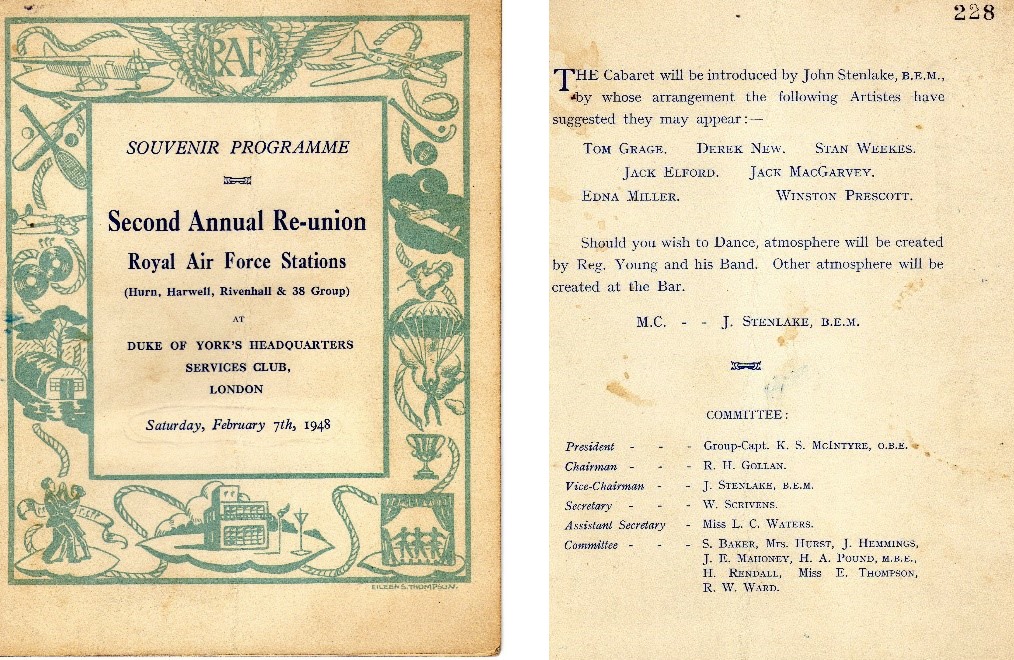 In summary:
In summary:
I was already aware of my father’s handful of memorabilia, including personal photos and bits of stories over the years from the war. At 93, he still has some memories, so I decided to collect these before they faded away. With added research, the jigsaw has been put together over this past year. My father has been keen to assist in completing this, resulting in some memories thought forgotten. So the lessons learned are it’s never too late and, in my father’s case, you never know what life will throw at you. His dream of becoming a pilot that was never to be realised.
Lighting a Candle for Diddley.
I volunteer for the National Trust at Polesden Lacey, a great location and perfect place therefore to light a candle for Diddley. Bertie has already visited here of course. He was a big hit with the visitors. If you are a regular reader you will remember this article well, when Bertie had the chance to interview Toffer.
www.mindfullybertie.org.uk/category/toffer
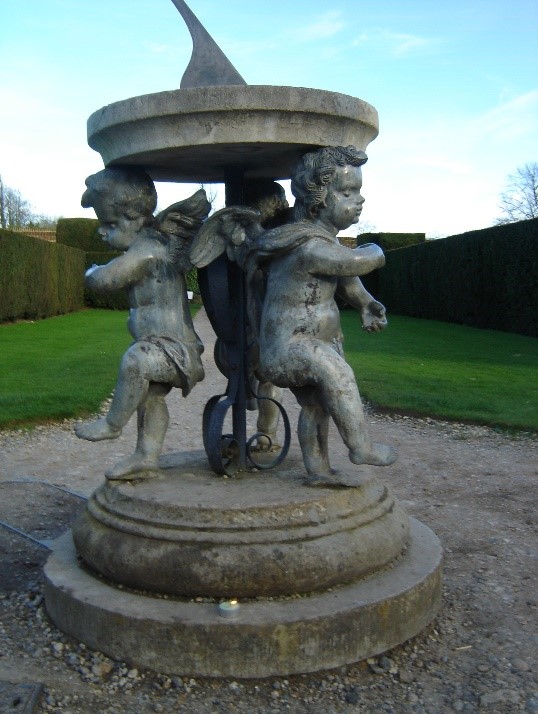

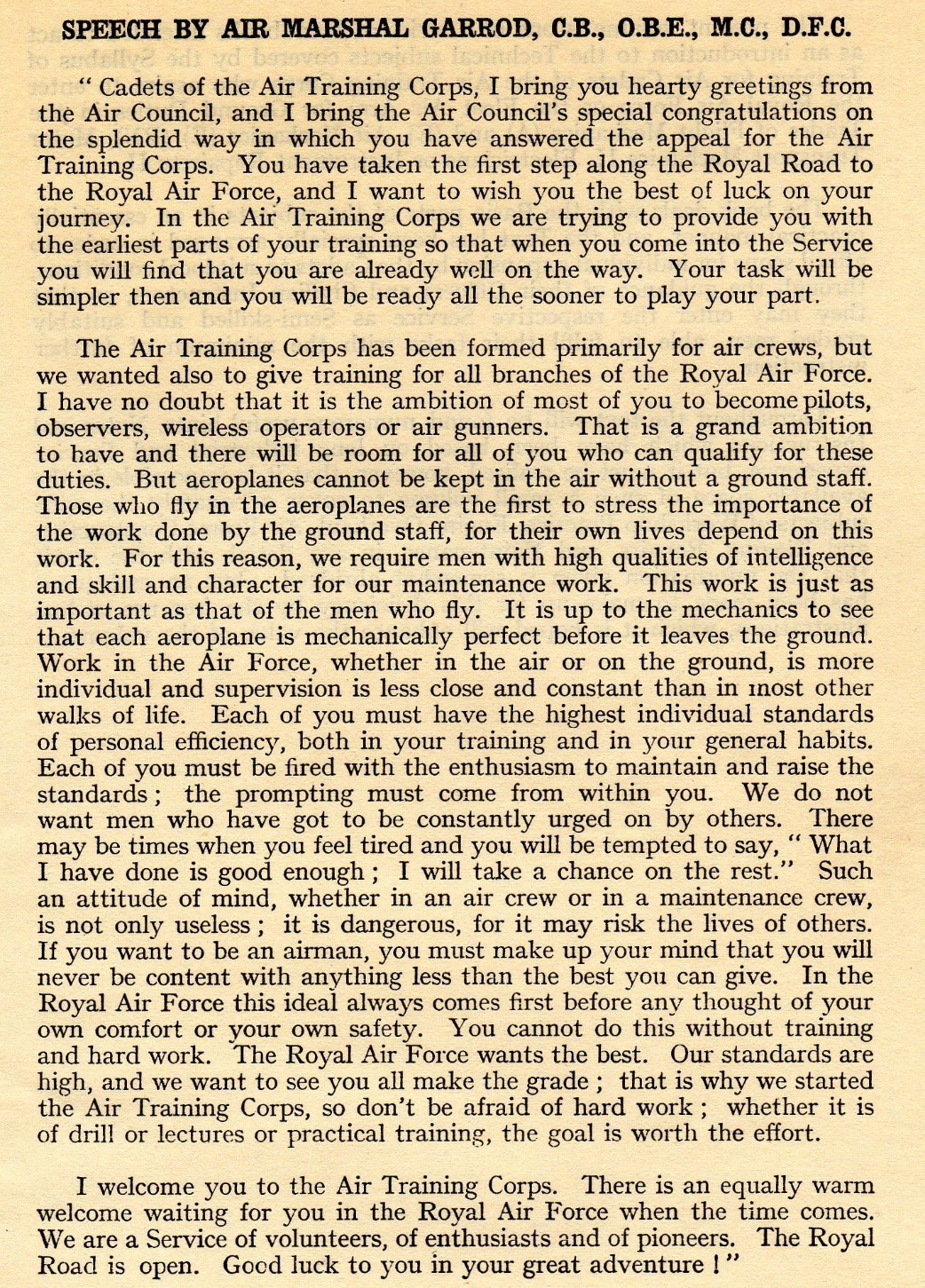
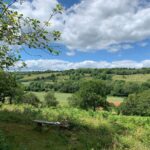

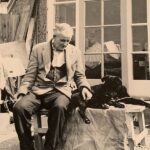
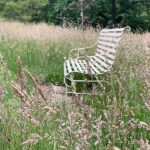
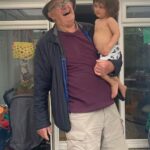

I have photographs of my dad whilst serving in the RAF during WW2, it really is fascinating to read other war stories.
Hello
My name is John Reid and I run the Stirling Bomber Research Library and have just read the story about Ernie Bruty which is an excellent work and extremely interesting. As I keep a very large archive of Stirling photographs (almost 4000) and other research information on the Stirling I have written up a short narrative about Ernie including the complete history of his Stirling LK156 shown in the photos. May I include a photo of the Stirling and crew and one of Ernie as these will be a means of keeping their memory alive in the future. One point I would like to clarify before proceeding. You show under the enlarged photo of air and ground crew that the pilot F/O Shuter is 5th from left back row. However when I digitally enlarged the photo this airman has only a half wing brevet and not a full pilot’s wing – the airman on the extreme left of the back row does perhaps meet this criteria. Any clarification will be appreciated.
Kind regards.
John Reid
Historian/Archivist
Thank you John. I have asked Bernard to contact you